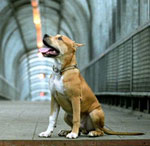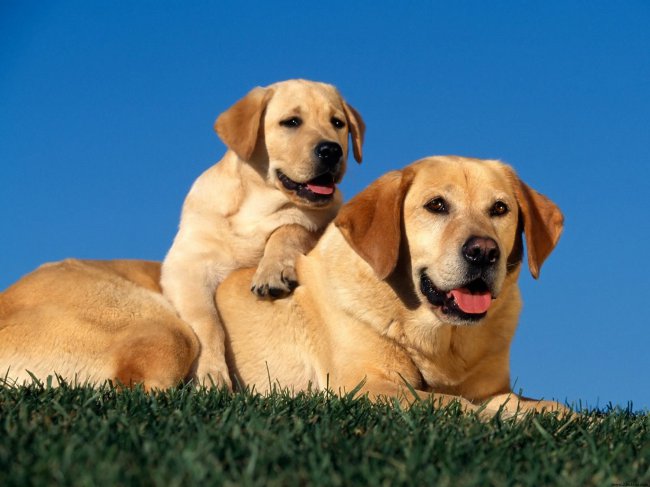Teams the dog. Stop! Crawl!
 The command "Stop!" The dog must perform faultlessly from any position. If the dog moves, at the command "Stop!" it should stop immediately.
The command "Stop!" The dog must perform faultlessly from any position. If the dog moves, at the command "Stop!" it should stop immediately."Stand!"
The command "Stop!" corresponds to the gesture: a sweep of the right arm, slightly bent at the elbow, palm up, from the hip forward to the level of the belt and lowering down to the thigh of the right leg.
For compulsion, the dog is raised by hand underBelly or pull up a leash. After the execution of the command, the dog is kept for some time in this position, encouraged and given a treat. After the dog has learned the right position, they begin to work out the restraint and to learn the gesture.
It is very important to timely encourage and correctposes. This command is sometimes digested more difficult than the commands "Sit!" or "Lie!", as it is quite difficult to disaccustom a dog to step with its paws or to make small steps.
To the team "Crawl!" the dog is taught after mastering the commands "Sit!" and "To lie!". The first lessons should be conducted on an even, dry, open area without stones, branches and other sharp objects.
"Crawl"
The trainer puts the dog to his left,holding her on a short leash. Then, shifting the assembled leash to the right hand, the trainer puts the palm of his left hand on the dog's withers and, having given command "Crawl!", Pulls the leash forward. He can move forward a little, urging the dog to move.
If the dog tries to get up, the trainer warns this movement by pressing the palm on the dog's wit, and repeats the command. The executed team is immediately encouraged by stroking or delicacy.
When the dog learns to crawl next totrainer, you need to go to the next stage. The dog is laid down by the command "To lie!" and put a treat or object at a distance of 2-3 m from the dog. Then the trainer gives the command "Crawl!", With his left hand holds it by the withers, preventing it from rising, and pushes the dog forward. When a dog reaches a treat or an object, it is encouraged. But you can not let a dog take a treat from the ground!
Some dogs, refusing to crawl,turn over on the back. Then the trainer puts the dog between his legs, which prevents her from turning over, and taking the dog by the collar forces her to move forward, giving the command. At the first attempts of the dog, crawl encourages her with a delicacy and repeats the command.
As the skill is developed, the creep distance increases and the terrain becomes more complex.
A well trained dog should crawl both independently and with the trainer, regardless of terrain or weather conditions.













